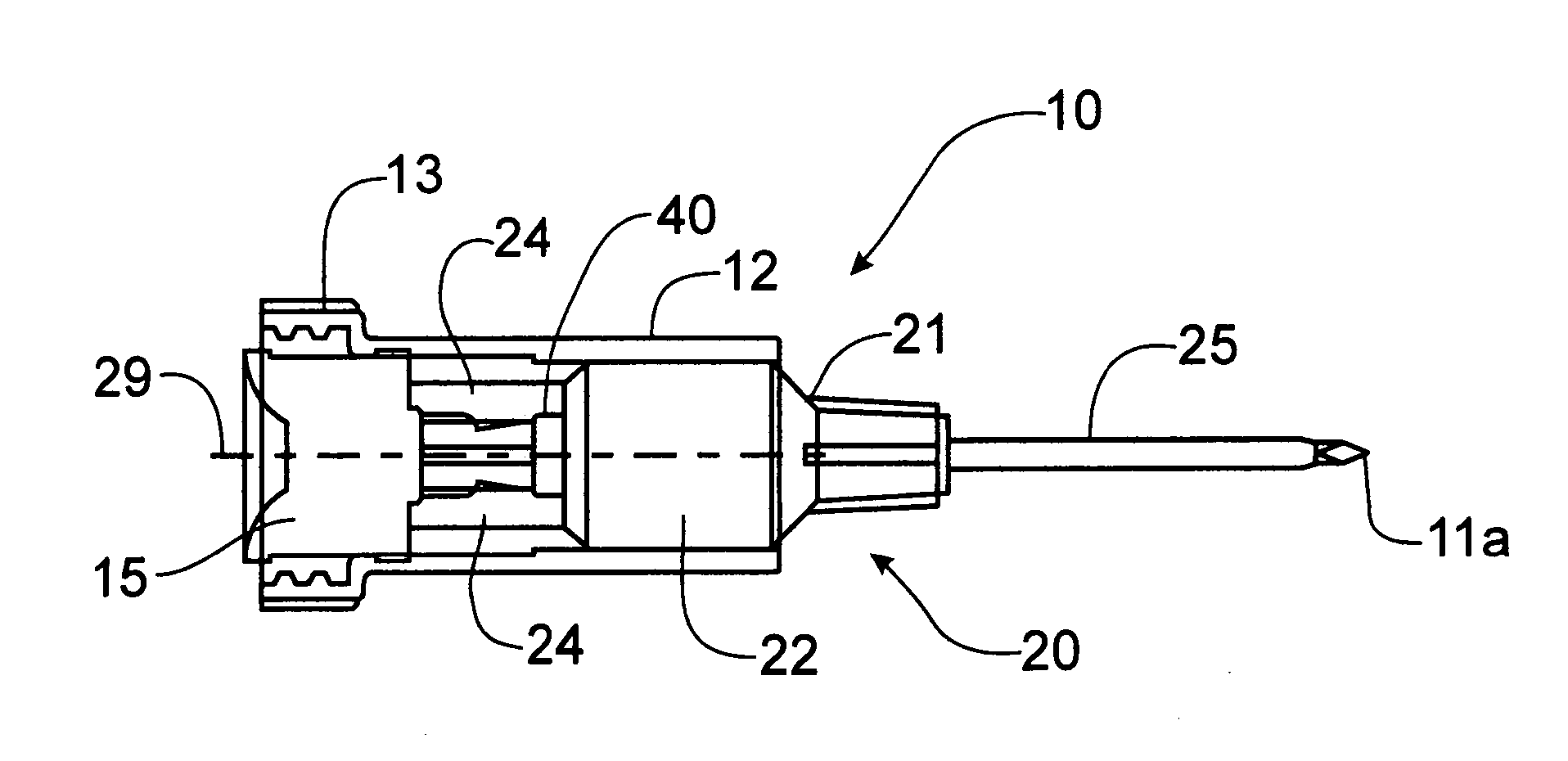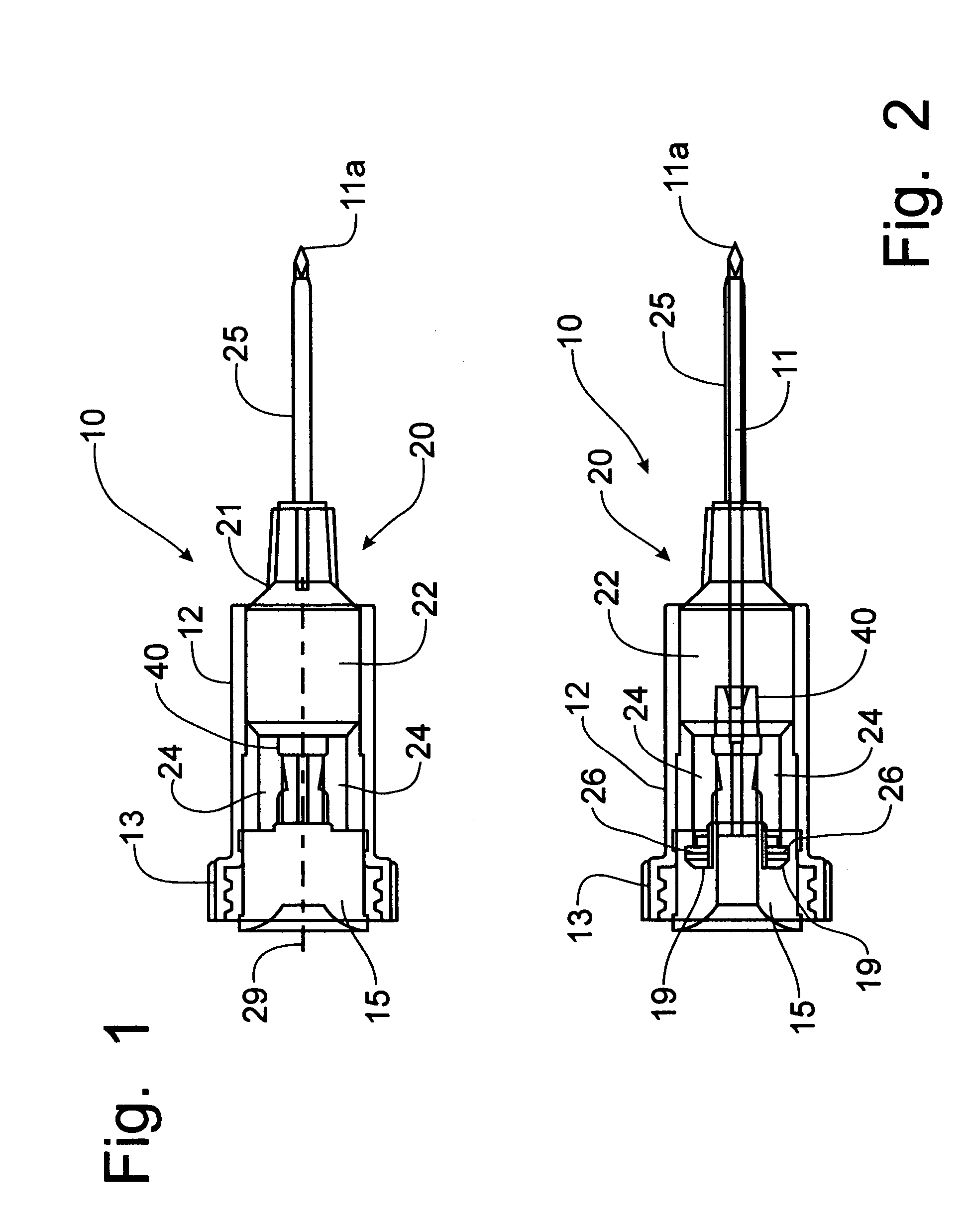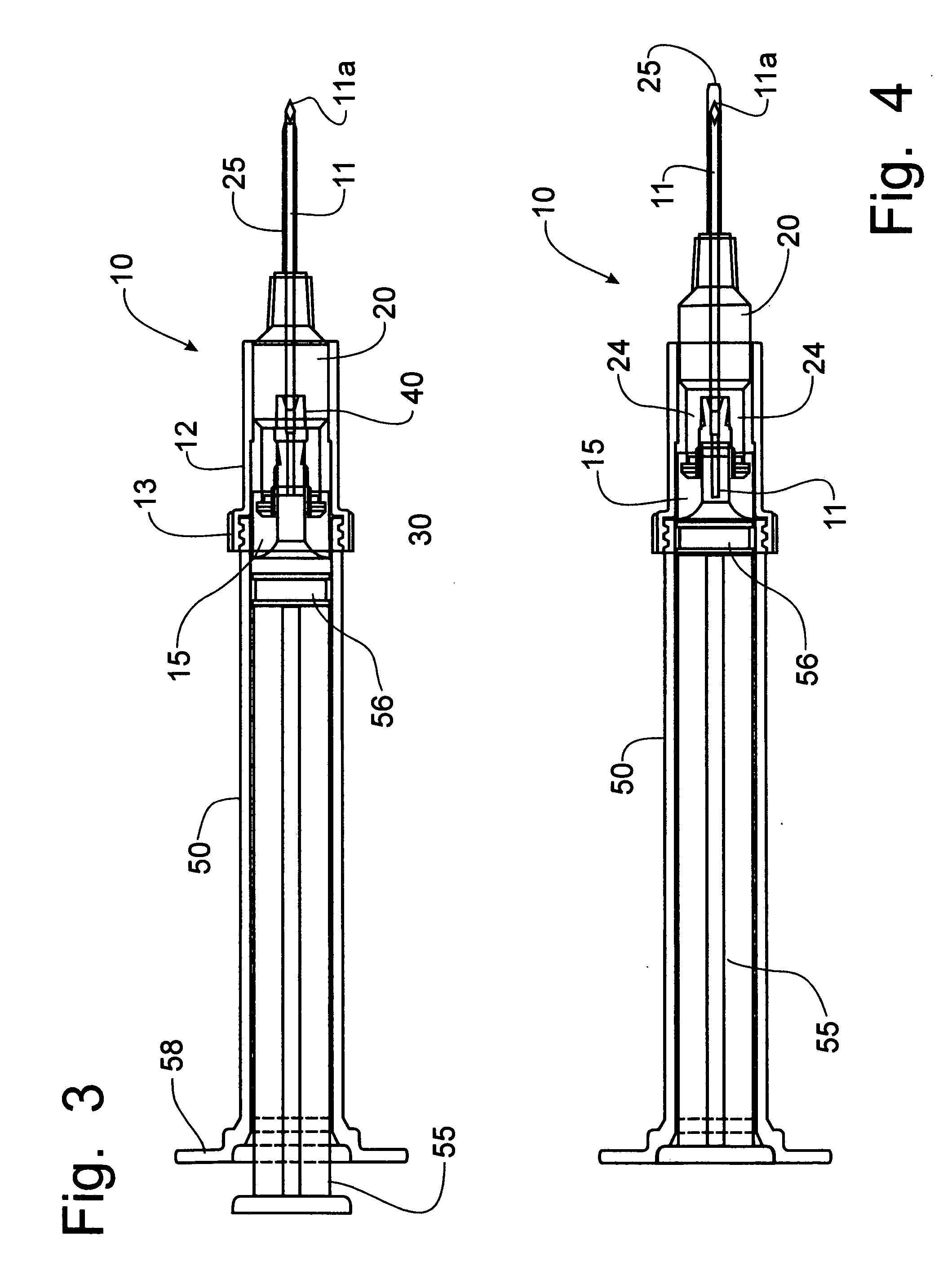Lock apparatus for a safety needle assembly
a technology for locking apparatus and safety needles, which is applied in the field of safety syringes, can solve the problems of inability to reuse safety syringes, insufficient design of locking mechanisms, and contaminated needle risks for users, and achieves the effects of convenient assemblage, low manufacturing cost, and durable construction
- Summary
- Abstract
- Description
- Claims
- Application Information
AI Technical Summary
Benefits of technology
Problems solved by technology
Method used
Image
Examples
Embodiment Construction
[0056] Referring to the drawings, the components of a safety needle assembly incorporating the principles of the instant invention can best be seen. The safety needle assembly 10 includes an outer housing 12 including a collar 13 threaded for quick connection to the receptor on a suitably configured syringe barrel. The diaphragm 15 is mounted within the housing 12 to provide a fluid-tight seal against the housing 12 and has an actuator side 16, facing the syringe barrel 50, and a needle side 17 from which the needle 11 projects. The needle 11 is received through the diaphragm 15, passing through a bore 44 in a central needle support 40 and projecting outwardly therefrom in an axial manner with respect to the housing 12.
[0057] The safety needle assembly 10 further includes an actuator 20 which includes a sheath head 21 through which the needle 11 passes and is extendible therefrom. The sheath head 21 includes a body portion 22 and a pair of axially extending legs 24 that project tow...
PUM
 Login to View More
Login to View More Abstract
Description
Claims
Application Information
 Login to View More
Login to View More - R&D
- Intellectual Property
- Life Sciences
- Materials
- Tech Scout
- Unparalleled Data Quality
- Higher Quality Content
- 60% Fewer Hallucinations
Browse by: Latest US Patents, China's latest patents, Technical Efficacy Thesaurus, Application Domain, Technology Topic, Popular Technical Reports.
© 2025 PatSnap. All rights reserved.Legal|Privacy policy|Modern Slavery Act Transparency Statement|Sitemap|About US| Contact US: help@patsnap.com



